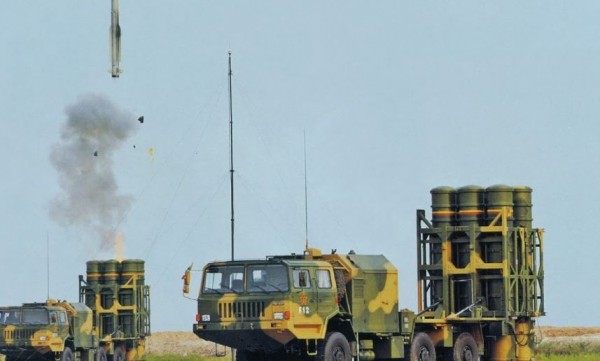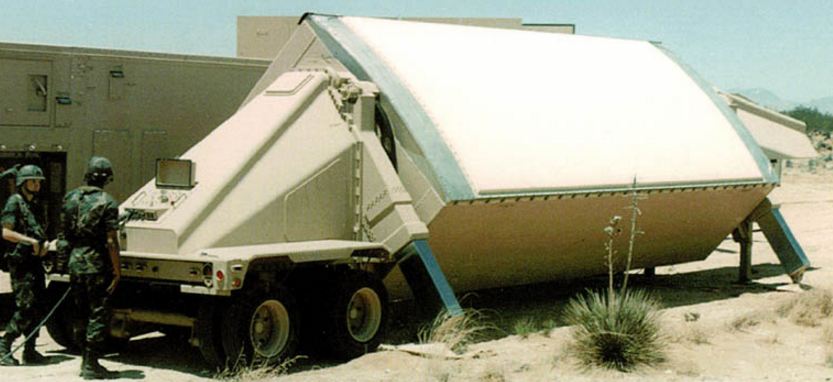Chinese-made Surface-to-Air Missile System Deployed by Pakistan Army
| Arthur Dominic Villasanta | | Apr 01, 2017 09:53 PM EDT |
(Photo : PLA) China's HQ-16, the original version of Pakistan's LY-80 SAM system.
The Pakistan Army has deployed the LY-80, the Chinese version of the Russian medium range Buk surface-to-air missile (SAM) system that shot down Malaysia Airlines Flight 17 over eastern Ukraine on July 17, 2014 killing all 283 passengers.
It's deploying three batteries of the Low to Medium Altitude Air Defense System (LOMADS) LY-80 air defense system made in China to defend strategically important locations against attacks by the Indian Air Force.
Like Us on Facebook
The LY-80 is the export version of the HQ-16, a Chinese-made SAM missile system introduced into the People's Liberation Army in September 2011 and currently used by the People's Liberation Army Ground Force (PLAGF). The naval version is called the HHQ-16.
The Pakistan Army described the LY-80 as a Chinese mobile air defense system capable of tracking and destroying a variety of aerial targets at longer ranges flying at low- and medium-altitude.
During the recent ceremony commissioning the LY-80 into the army, General Qamar Javed Bajwa, Chief of Army Staff of the Pakistan Army, said "LY-80 LOMADS increases our response capability to current and emerging air defense threats."
The three LY-80 batteries are operated by the Pakistan Army Air Defense Command under Lt. Gen. Muhammad Zahid Latif Mirza.
The command is tasked with the air defense of strategic Pakistani assets against air attack. It's headquartered at the Chaklala Army Cantonment in Rawalpindi, Punjab Province.
The LY-80 missile can intercept an aircraft or a cruise missile flying at an altitude ranging from 15 meters to 18 km. Its maximum interception range for combat aircraft is 40 km, and between 3.5 km and 12 km for cruise missiles flying at an altitude of 50 meters at a speed of 300 meters/second.
The claimed single-shot kill probability for the LY-80 is 85 percent against combat aircraft and 60 percent against cruise missiles.
China uses the HQ-16 to protect stationary assets such as airfields, command posts, troop concentrations and bridges.
A PLAGF HQ-16 battery consists of four launcher vehicles (each with six missiles); a command post; two radar vehicles; missile transport and reloading vehicles and power supply vehicles.
The HQ-16 radar can detect enemy aircraft at a range of 140 km and an altitude of 20 km. The radar can detect up to 144 targets and track up to 48 targets simultaneously.
TagsPakistan Army, LY-80, surface-to-air missile (SAM), Buk surface-to-air missile, Low to Medium Altitude Air Defense System (LOMADS) LY-80, People's Liberation Army, General Qamar Javed Bajwa
©2015 Chinatopix All rights reserved. Do not reproduce without permission
EDITOR'S PICKS
-

Did the Trump administration just announce plans for a trade war with ‘hostile’ China and Russia?
-

US Senate passes Taiwan travel bill slammed by China
-

As Yan Sihong’s family grieves, here are other Chinese students who went missing abroad. Some have never been found
-

Beijing blasts Western critics who ‘smear China’ with the term sharp power
-

China Envoy Seeks to Defuse Tensions With U.S. as a Trade War Brews
-

Singapore's Deputy PM Provides Bitcoin Vote of Confidence Amid China's Blanket Bans
-

China warns investors over risks in overseas virtual currency trading
-

Chinese government most trustworthy: survey
-

Kashima Antlers On Course For Back-To-Back Titles
MOST POPULAR
LATEST NEWS
Zhou Yongkang: China's Former Security Chief Sentenced to Life in Prison

China's former Chief of the Ministry of Public Security, Zhou Yongkang, has been given a life sentence after he was found guilty of abusing his office, bribery and deliberately ... Full Article
TRENDING STORY

China Pork Prices Expected to Stabilize As The Supplies Recover

Elephone P9000 Smartphone is now on Sale on Amazon India

There's a Big Chance Cliffhangers Won't Still Be Resolved When Grey's Anatomy Season 13 Returns

Supreme Court Ruled on Samsung vs Apple Dispute for Patent Infringement

Microsoft Surface Pro 5 Rumors and Release Date: What is the Latest?













